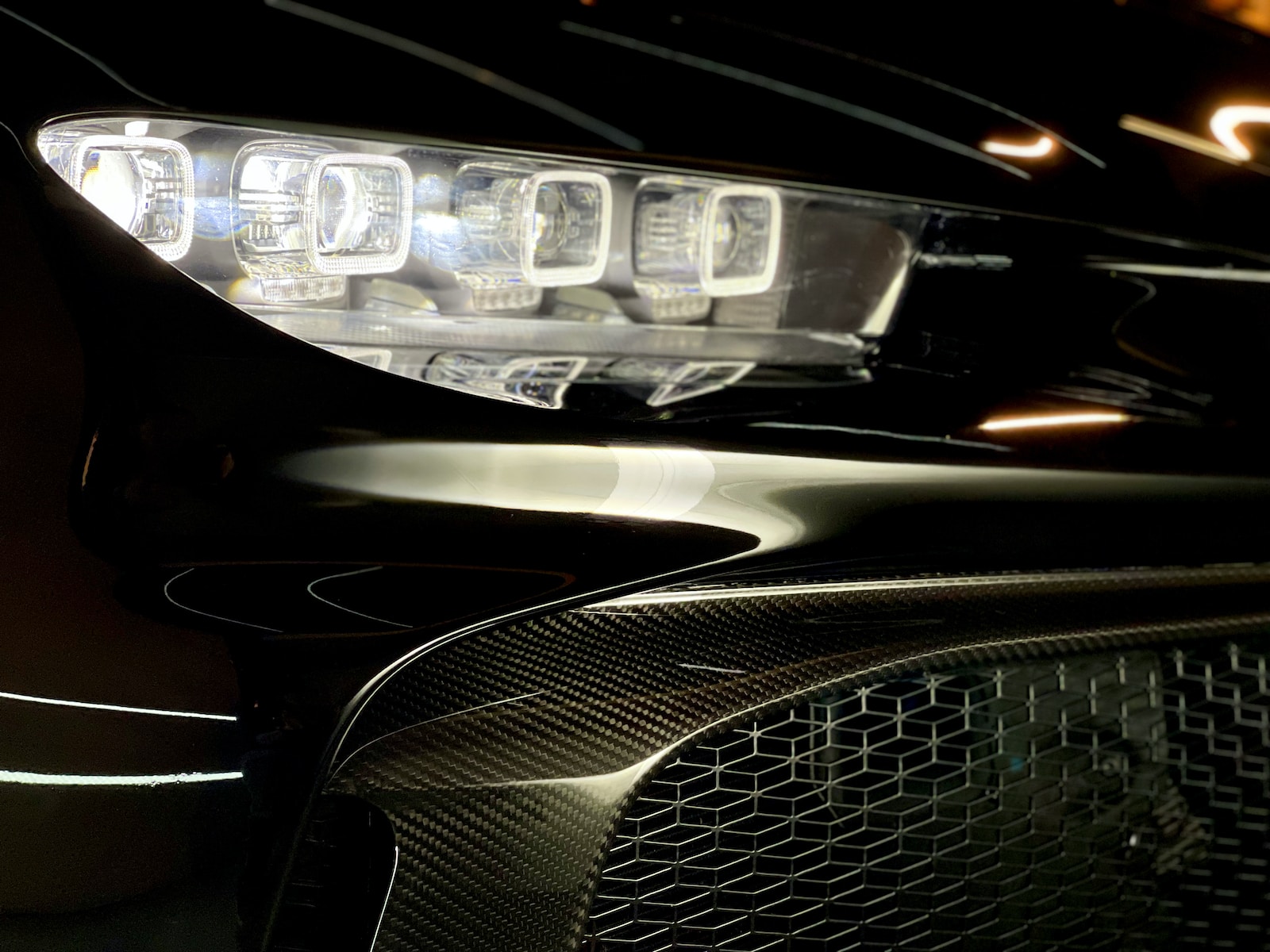As the race to develop autonomous vehicles heats up, two names stand out in the highly competitive field: Tesla and Waymo. While both companies are leaders in self-driving technology, there are significant differences between their approaches and the capabilities of their autonomous vehicles.
In this article, we will delve into the features and capabilities of Tesla’s Autopilot and Waymo’s Self-Driving Tech. We will explore their respective strengths and weaknesses and compare and contrast the two technologies.
Key Takeaways
- There are significant differences between Tesla’s Autopilot and Waymo’s Self-Driving Tech.
- Both technologies have their respective strengths and weaknesses.
- Autonomous vehicles are the future of transportation, and these technologies are at the forefront of this revolution.
Understanding Tesla’s Autopilot
Tesla’s Autopilot system is an advanced driver-assistance system that offers a range of features and capabilities to Tesla vehicles. The system is designed to enable autonomous driving and offers a level of autonomy that is unmatched by other vehicles on the market.
The Tesla Autopilot system includes a suite of sensors, cameras, and radar that work together to provide a comprehensive view of the vehicle’s surroundings. The system can detect objects in its path, including other vehicles, pedestrians, and obstacles, and can make adjustments to the vehicle’s speed, direction, and braking accordingly.
The system’s advanced features include Autosteer, which allows the vehicle to steer itself on highways and freeways, and Navigate on Autopilot, which provides turn-by-turn guidance to the destination. The system also includes features such as Summon, which enables the vehicle to park itself in a parking lot, and Autopark, which helps the vehicle park in a parking space.
Overall, Tesla’s Autopilot system is a major step forward in autonomous driving technology and has the potential to revolutionize the automotive industry. With its advanced capabilities and cutting-edge features, the system is leading the way in the development of autonomous vehicles.
A Closer Look at Waymo’s Self-Driving Tech
Waymo is a subsidiary of Alphabet Inc. (Google’s parent company) and one of the pioneers in the self-driving car industry. The company has been developing autonomous technology since 2009 and has captured significant attention in recent years. Waymo’s self-driving technology is unique, with a distinctive approach to autonomous driving.
Waymo’s self-driving vehicles use a combination of cameras, LiDAR, and radar sensors to create a 360-degree view of the car’s surroundings. The data gathered is combined with high-resolution maps to help guide the car and make decisions based on real-time information. The maps provide detailed information about the environment, including road gradients, curb heights, and road signs, which enhance the accuracy of the vehicle’s perception.
Waymo’s self-driving technology has undergone extensive testing, with thousands of miles traveled on public roads. The company has invested heavily in safety, and its vehicles are equipped with backup systems that can take control of the car if necessary. Furthermore, Waymo has implemented comprehensive safety protocols and conducts rigorous testing to ensure its vehicles meet high safety standards.
Comparative Analysis: Tesla Autopilot vs Waymo’s Self-Driving Tech
When it comes to autonomous driving technology, Tesla’s Autopilot and Waymo’s Self-Driving Tech are two of the most prominent solutions in the market. Let’s take a closer look at the key differences between the two systems.
Approach to Autonomous Driving
While both Tesla and Waymo are focusing on the development of autonomous driving technologies, their approaches differ significantly. Tesla’s Autopilot is designed as a driver assistance system, while Waymo’s technology is created to enable fully autonomous driving without a human driver.
With Autopilot, the driver is responsible for monitoring the environment and taking control of the vehicle in case of an emergency. On the other hand, Waymo’s technology does not require any human intervention, making it a true self-driving solution.
Technological Advancements
Another significant difference between Tesla’s Autopilot and Waymo’s Self-Driving Tech lies in their technological advancements. Tesla’s Autopilot is primarily powered by cameras and radar sensors, while Waymo’s solution relies on a combination of cameras, radar, and LiDAR (Light Detection and Ranging) sensors.
LiDAR technology is considered to be more advanced than traditional cameras and radar sensors, as it provides a 3D map of the surroundings with a high level of accuracy.
Performance
In terms of performance, both Tesla’s Autopilot and Waymo’s Self-Driving Tech have demonstrated impressive capabilities. Tesla’s Autopilot has been praised for its advanced features, such as its ability to navigate complex driving situations and its automatic lane-changing functionality.
Waymo’s Self-Driving Tech, on the other hand, has been tested extensively on public roads and has proven its ability to handle a range of challenging scenarios, such as heavy traffic and adverse weather conditions.
Safety and Reliability
Both Tesla and Waymo place a high priority on safety and reliability in their autonomous driving technologies. Tesla’s Autopilot features a range of safety measures, including automatic emergency braking and collision avoidance, while Waymo’s Self-Driving Tech employs a range of redundant systems to ensure safety.
Tesla Autopilot vs Waymo Self-Driving: The Verdict
Overall, it is clear that Tesla’s Autopilot and Waymo’s Self-Driving Tech are two very different solutions with their own unique advantages. While Tesla’s Autopilot is a driver assistance system that still requires human intervention, Waymo’s Self-Driving Tech is a fully autonomous solution that can operate without a driver.
Both technologies have their strengths and weaknesses, and the choice between the two will ultimately depend on the specific needs and preferences of individual users.
Safety and Reliability of Tesla Autopilot and Waymo’s Self-Driving Tech
Safety and reliability are paramount when it comes to autonomous vehicles. Both Tesla’s Autopilot and Waymo’s self-driving technology have implemented various measures to ensure the safety of their passengers and other road users.
Tesla’s Autopilot features advanced safety measures, including automatic emergency braking, collision avoidance, and lane departure warnings. The system also uses various sensors, including cameras, radars, and ultrasonic sensors, to detect and avoid potential hazards on the road.
Waymo’s self-driving technology also implements numerous safety features, including a robust sensor suite, redundant hardware, and software safety checks. Waymo’s vehicles are equipped with lidar, radar, and cameras, which provide a 360-degree view of the driving environment, allowing for precise and accurate navigation.
In terms of reliability, both Tesla and Waymo have put their self-driving technologies through extensive testing and development processes. Tesla’s Autopilot has been in use for years, with regular software updates improving the system’s performance and capabilities.
Waymo’s self-driving technology has also undergone extensive testing, with the company’s vehicles logging millions of miles on public roads. Additionally, Waymo has partnered with numerous companies, including ride-hailing services, to further test and refine their self-driving technology.
Overall, both Tesla’s Autopilot and Waymo’s self-driving technology have prioritized safety and reliability in the development of their autonomous vehicle systems. While their approaches may differ, their shared goal of providing safe and efficient transportation through self-driving cars is driving the technological advancements in the automotive industry.
Real-World Applications and Success Stories
Tesla’s Autopilot and Waymo’s self-driving technology have already made significant strides in the automotive industry, with real-world applications and success stories to show for it.
Tesla’s autonomous driving technology has been a game-changer in the automobile industry, offering a range of automated features to improve driving experience. In March 2018, a Tesla Model X, equipped with Autopilot, successfully navigated itself to a location without any human intervention across the country.
Waymo’s self-driving technology has been put to the test in a ride-hailing service in Phoenix, Arizona, since 2017. Passengers who took rides in Waymo’s self-driving cars gave positive feedback on their experience, stating that the ride was smooth and felt safe.
Real-World Applications and Success Stories – Tesla’s Autopilot
Tesla’s Autopilot has enabled several real-world applications and has led to some success stories, including:
| Real-World Applications | Success Stories |
|---|---|
| Autonomous Lane Changing | A Tesla Model S successfully avoided an accident by autonomously changing lanes. |
| Summon | A Tesla Model X was summoned to its owner’s location across a busy road using the Autopark feature. |
| Autonomous Parking | A Tesla Model 3 autonomously parked itself into a tight spot. |
Real-World Applications and Success Stories – Waymo’s Self-Driving Tech
Waymo’s self-driving technology has enabled several real-world applications, including:
| Real-World Applications | Success Stories |
|---|---|
| Ride-Hailing Service | Waymo’s self-driving cars have provided a ride-hailing service in Phoenix, Arizona, since 2017, with positive feedback from passengers. |
| Delivery Service | Waymo’s autonomous trucks have been used to transport goods for several companies, including Google’s data centers. |
| Autonomous Ride-Hailing Service | Waymo’s self-driving cars have been used to provide an autonomous ride-hailing service in Arizona, with plans to expand to other cities. |
Overall, Tesla’s Autopilot and Waymo’s self-driving technology have already shown that they have the potential to transform the automotive industry. As autonomous technology continues to advance, we can expect to see even more real-world applications and success stories in the near future.
Future Developments and Challenges
Autonomous vehicles and self-driving cars are rapidly advancing into the mainstream, with Tesla and Waymo leading the pack in innovation. Looking to the future, both companies are faced with a multitude of challenges and obstacles to overcome to make autonomous driving safe and accessible for all.
Tesla Autonomous Driving
Tesla’s Autopilot system has seen significant advancements in recent years, with the latest version offering full self-driving capabilities in certain situations. However, the company still faces challenges in perfecting the technology for all driving scenarios, weather conditions, and road types.
Additionally, Tesla’s Autopilot system has come under scrutiny for its safety features, with some incidents resulting in accidents or fatalities. The company is working to address these concerns by improving safety features, while also ensuring the technology remains accessible and affordable.
Waymo Autonomous Technology
Waymo has made significant strides in autonomous driving technology, with their self-driving cars logging millions of miles on the road. However, the company faces challenges in scaling their technology to a wider audience, as well as ensuring it can operate in all weather and road conditions.
Waymo also faces regulatory hurdles as it seeks to expand its operations beyond the current pilot programs in select cities. The company must also continue to improve safety and reliability measures to ensure its technology can safely navigate complex driving scenarios.
The Future of Autonomous Driving
Despite the challenges, the future of autonomous driving looks promising. Tesla and Waymo’s technologies are paving the way for a new era of transportation that is safer, more efficient, and less reliant on fossil fuels. However, there is still much work to be done to ensure the technology is safe and accessible for all.
The development of autonomous driving technology is also expected to have a profound impact on society and the economy, with the potential to transform industries and create new opportunities. As developments continue, it will be crucial for companies like Tesla and Waymo to prioritize safety, reliability, and accessibility to fully realize the potential of autonomous driving technology.
Conclusion
As we have explored, Tesla’s Autopilot and Waymo’s Self-Driving Tech are two of the leading autonomous driving technologies in the market today. While they both aim to achieve the same goal, there are significant differences in their approaches and capabilities.
Tesla’s Autopilot is designed to offer a range of advanced features, such as automatic lane changing and autonomous parking, to enhance the driving experience. However, it is important to note that Tesla’s Autopilot is not a fully self-driving system and requires human supervision.
On the other hand, Waymo’s Self-Driving Tech is considerably more advanced, offering a fully autonomous driving experience with no human intervention required. Waymo’s technology is designed to handle complex driving scenarios, such as navigating through busy city streets and adverse weather conditions.
While both technologies are impressive in their own right, safety and reliability remain critical concerns for autonomous vehicles. Both Tesla and Waymo have implemented rigorous safety measures to ensure the safety of passengers and other road users.
The Future of Autonomous Driving
The race to develop fully autonomous driving technology is far from over, and both Tesla and Waymo are at the forefront of this push. In the coming years, we can expect to see further advancements in self-driving technology, including improved safety features, enhanced performance, and expanded applications.
However, there are still significant challenges to overcome, including regulatory hurdles, public perception, and technological limitations. Nevertheless, the benefits of autonomous driving are undeniable, and it is only a matter of time before we see more self-driving cars on our roads.
In conclusion, while there are key differences between Tesla’s Autopilot and Waymo’s Self-Driving Tech, both technologies have the potential to revolutionize the way we travel and commute. As autonomous driving technology continues to evolve, it will be exciting to see how these two giants of the automotive industry adapt and innovate to meet the demands of the future.
FAQ
Q: What is the difference between Tesla’s Autopilot and Waymo’s Self-Driving Tech?
A: Tesla’s Autopilot and Waymo’s Self-Driving Tech are both autonomous driving technologies, but they have different approaches and features. Tesla’s Autopilot is designed to assist drivers with features like lane keeping, adaptive cruise control, and self-parking. Waymo’s Self-Driving Tech, on the other hand, is focused on fully autonomous driving, where the vehicle can operate without any human intervention.
Q: How does Tesla’s Autopilot work and what are its capabilities?
A: Tesla’s Autopilot uses a combination of cameras, radar, and ultrasonic sensors to gather data about its surroundings. It can detect and respond to other vehicles, pedestrians, and obstacles, and it offers features like automatic emergency braking and autopark. While Autopilot offers advanced driver assistance, it still requires the driver to be attentive and ready to take control of the vehicle if needed.
Q: What makes Waymo’s Self-Driving Tech unique?
A: Waymo’s Self-Driving Tech is unique because it is designed to operate without any human intervention. It uses a combination of sensors, cameras, and lidar technology to create a detailed map of its surroundings and make real-time decisions while navigating. Waymo’s self-driving vehicles have undergone extensive testing on public roads and have accumulated millions of miles of autonomous driving experience.
Q: How do Tesla’s Autopilot and Waymo’s Self-Driving Tech compare?
A: While both technologies aim to achieve autonomous driving, Tesla’s Autopilot focuses on driver assistance and partial autonomy, while Waymo’s Self-Driving Tech is designed for full autonomy. Tesla’s Autopilot is available in their production vehicles, while Waymo’s technology is primarily being used in Waymo’s own fleet of self-driving vehicles for ride-hailing services.
Q: How do Tesla and Waymo prioritize safety in their autonomous technologies?
A: Both Tesla and Waymo prioritize safety in their autonomous technologies. Tesla’s Autopilot includes safety features like automatic emergency braking, collision warning, and blind-spot monitoring. Waymo has implemented a multi-layered safety approach, including redundant systems, robust testing protocols, and a thorough validation process.
Q: Can you provide examples of real-world applications of Tesla’s Autopilot and Waymo’s Self-Driving Tech?
A: Tesla’s Autopilot has been widely used by Tesla owners for hands-free driving on highways and in traffic, providing convenience and reducing driver fatigue. Waymo’s Self-Driving Tech has been utilized for ride-hailing services in select cities, offering users the experience of traveling in fully autonomous vehicles.
Q: What are the future developments and challenges for Tesla and Waymo in autonomous driving?
A: The future of autonomous driving holds various developments and challenges for Tesla and Waymo. Both companies are continually working to enhance their technologies and expand their autonomous driving capabilities. However, challenges such as regulatory frameworks, public perception, and ensuring safety remain important considerations for the widespread adoption of autonomous vehicles.



